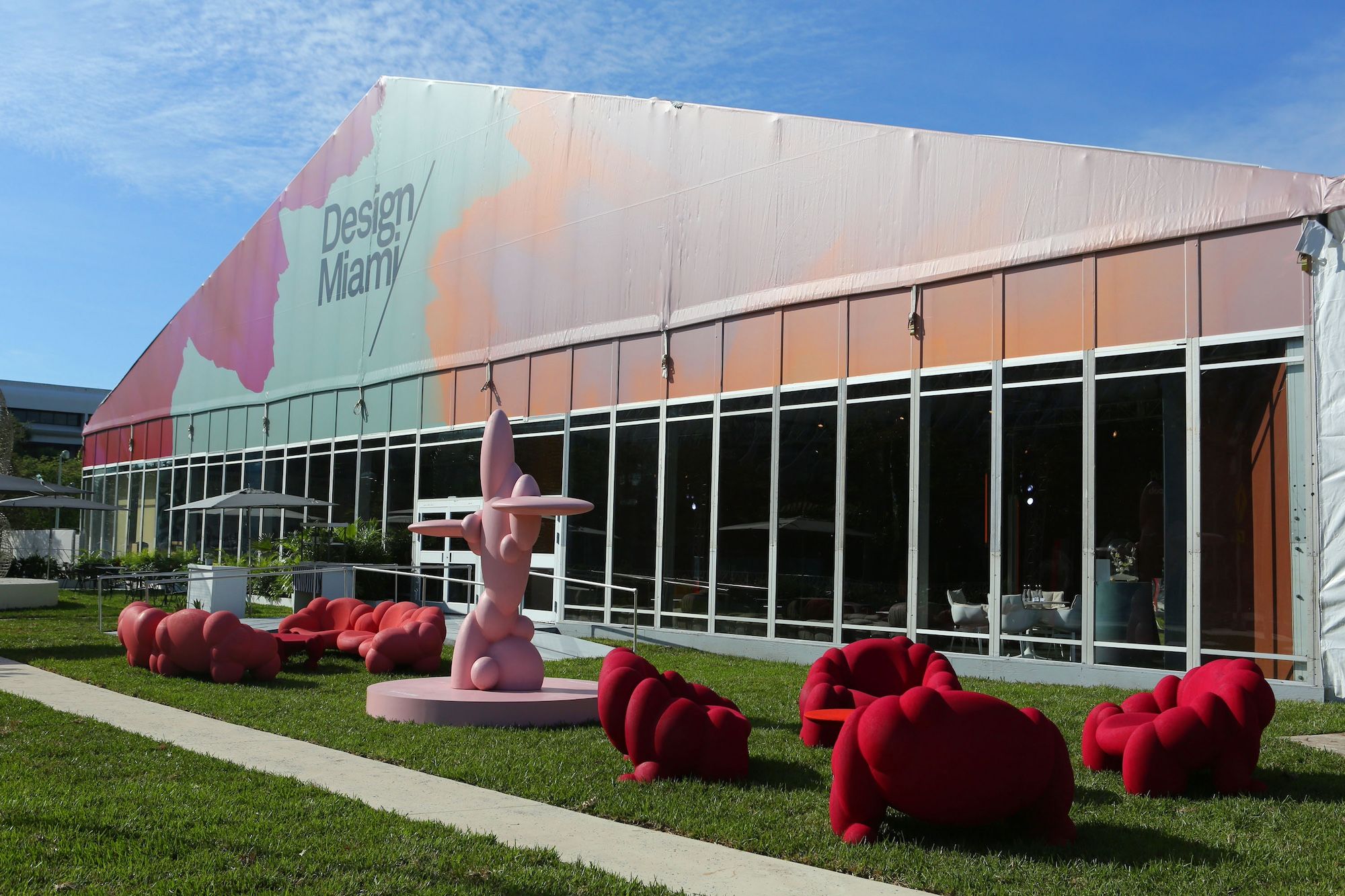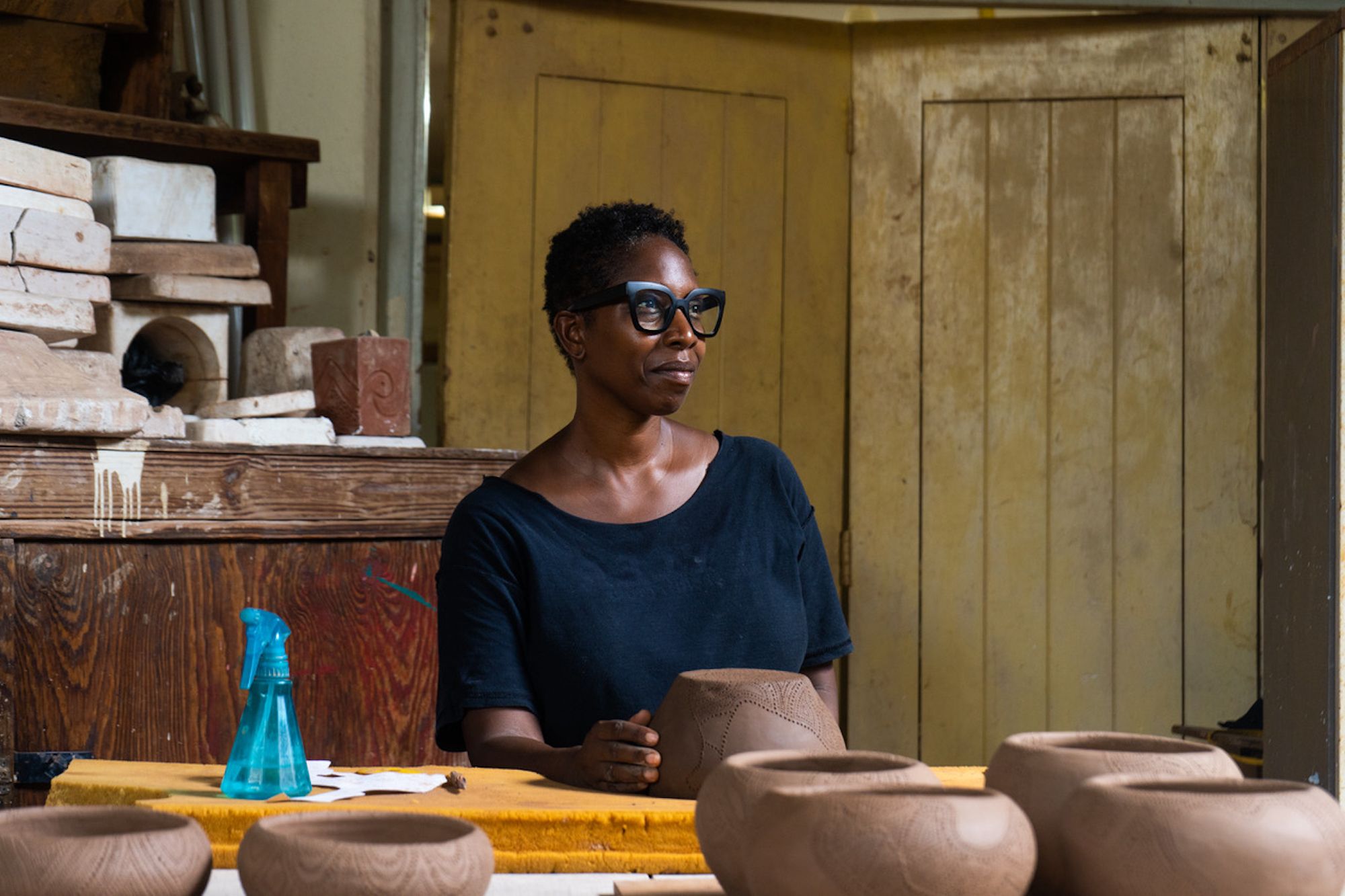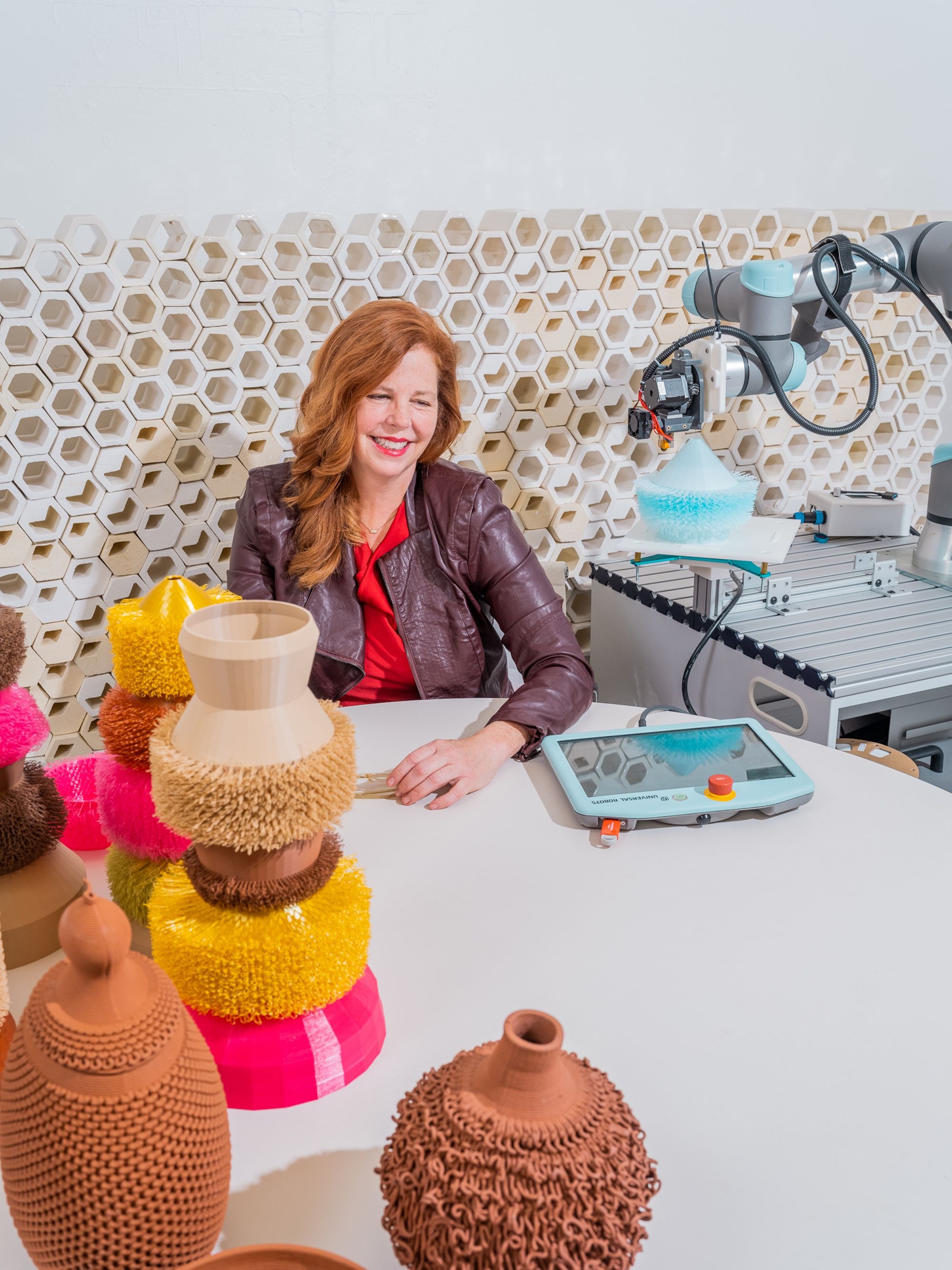SPOTLIGHT: WHERE WE STAND DECEMBER 6 2023
by Anna Carnick
The South African ceramicist on design as a tool to heal
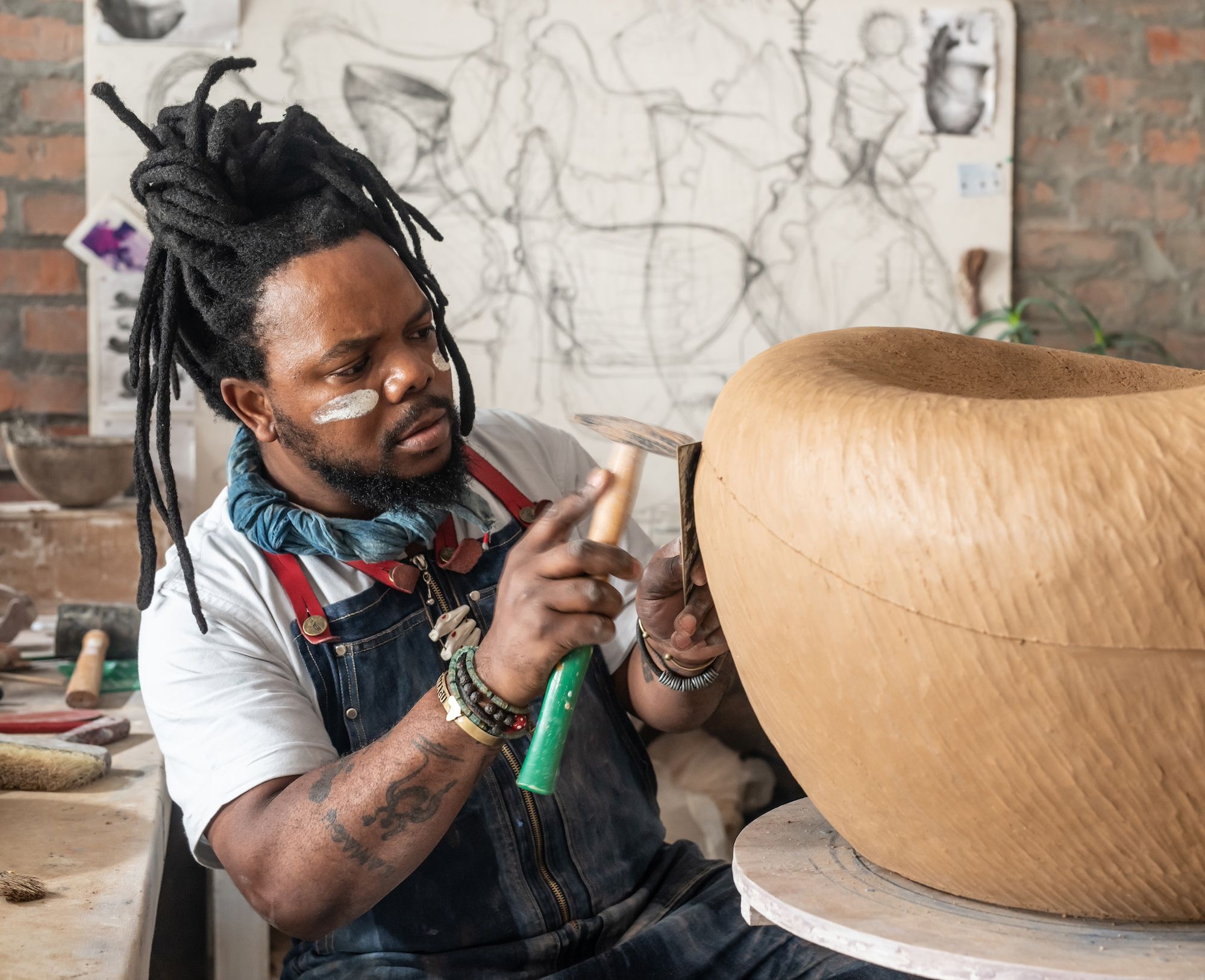
ANDILE DYALVANE/ AT WORK IN HIS STUDIO
Photo © Adel Ferreira, Southern Guild, and Xigera
To augment the Design Miami/ 2023 curatorial theme Where We Stand, we’ve put together an editorial miniseries featuring interviews with exceptional creatives whose practices exemplify future-facing, socially engaged, and narrative-driven design approaches. These thought-provoking design thinkers all have works on view in the upcoming fair and, for this series, have responded to our queries with edifying insights into design’s role in strengthening our connections with one another. Today, we’re thrilled to bring you our interview with Andile Dyalvane, one of South Africa’s foremost ceramic artists, an AmaXhosa tribe community healer, and a powerful international voice representing and celebrating Xhosa culture.
“Art is a bridge to join what is fragmented or separated in the world.”
— Andile Dyalvane
Dyalvane was born in the small rural village of Ngobozana in South Africa's Eastern Cape. Answering the call of his ancestors, he has dedicated his practice to creating sculptural, spiritual objects out of umhlaba (mother earth) that converse with traditional Xhosa forms and symbols—always with the goal of uplifting his community, sharing their stories with the wider world, and, ultimately, helping to heal the deep wounds that colonialism and apartheid inflicted on his people. As he has said, “Art is a bridge to join what is fragmented or separated in the world.”
Dyalvane’s work has been exhibited in prestigious venues across the globe and can be found the permanent collections of the Metropolitan Museum of Art, Vitra Design Museum, New Taipei City Yingge Ceramic Museum, Iziko South African National Gallery, Nelson Mandela Metropolitan Art Museum, Pérez Art Museum Miami, and the Corobrik Ceramics Collection. He is represented by Southern Guild in Cape Town and LA.
Scroll on for Dyalvane’s thoughts on some of the questions animating the Design Miami/ 2023 Where We Stand theme.
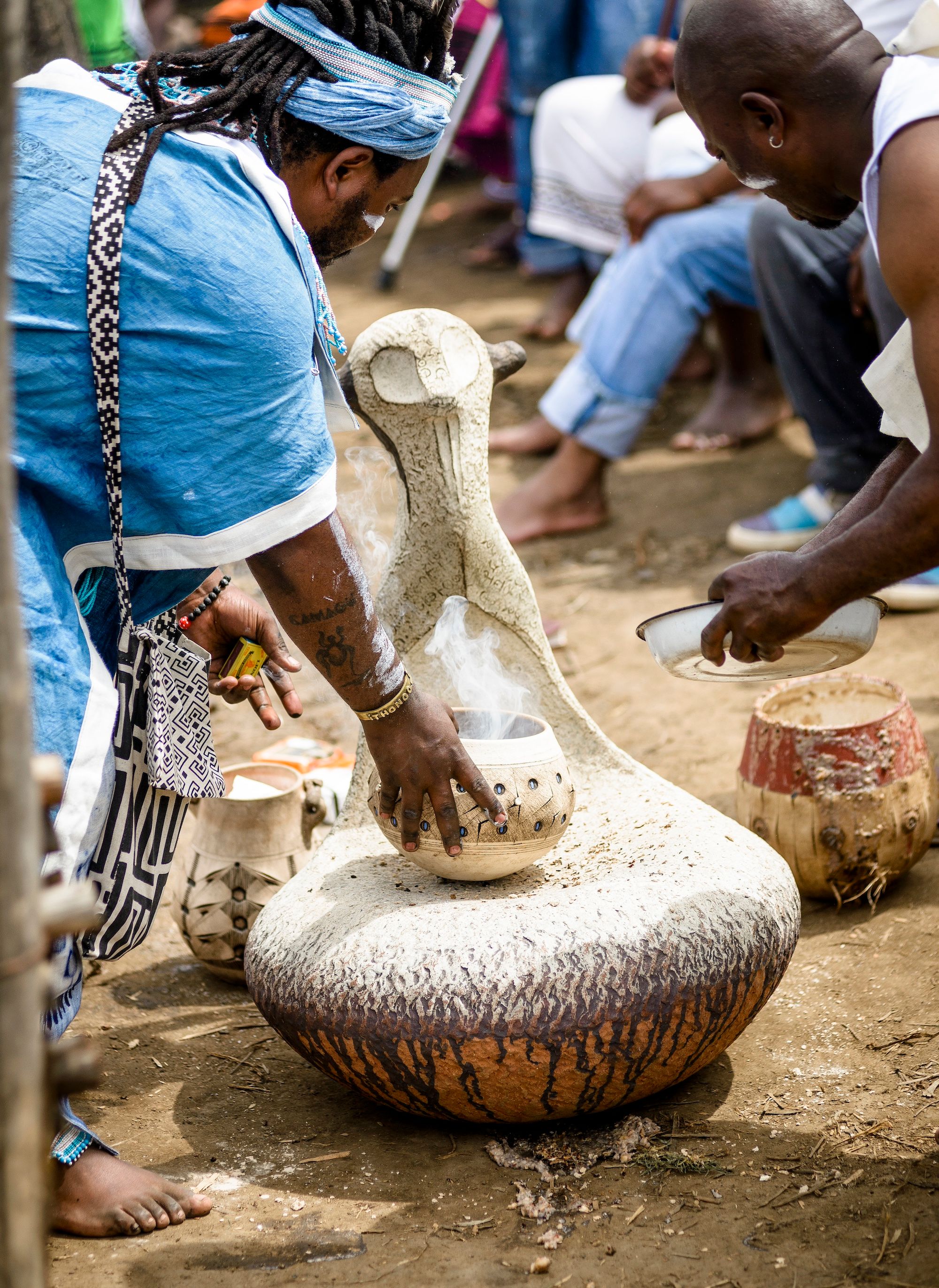
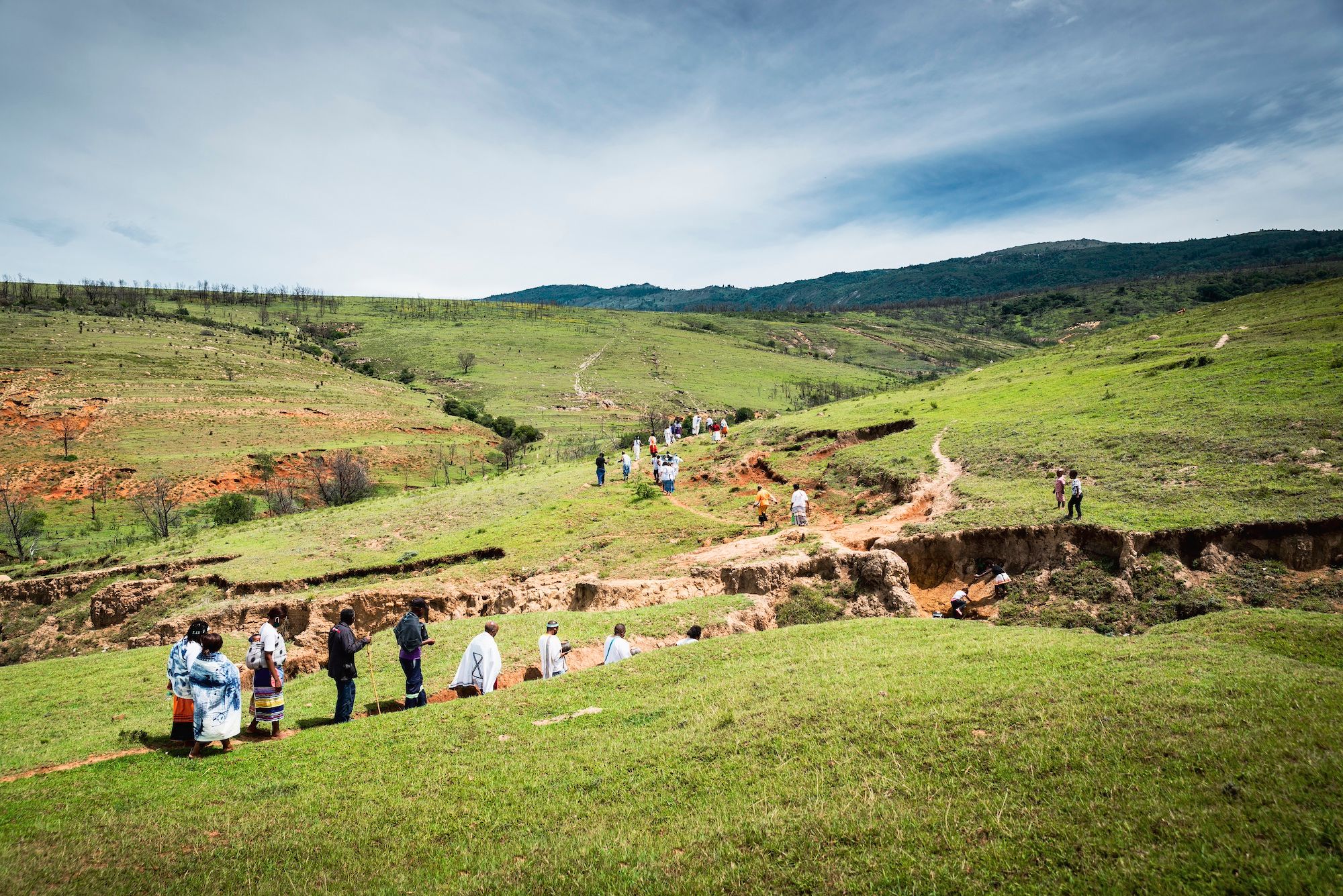
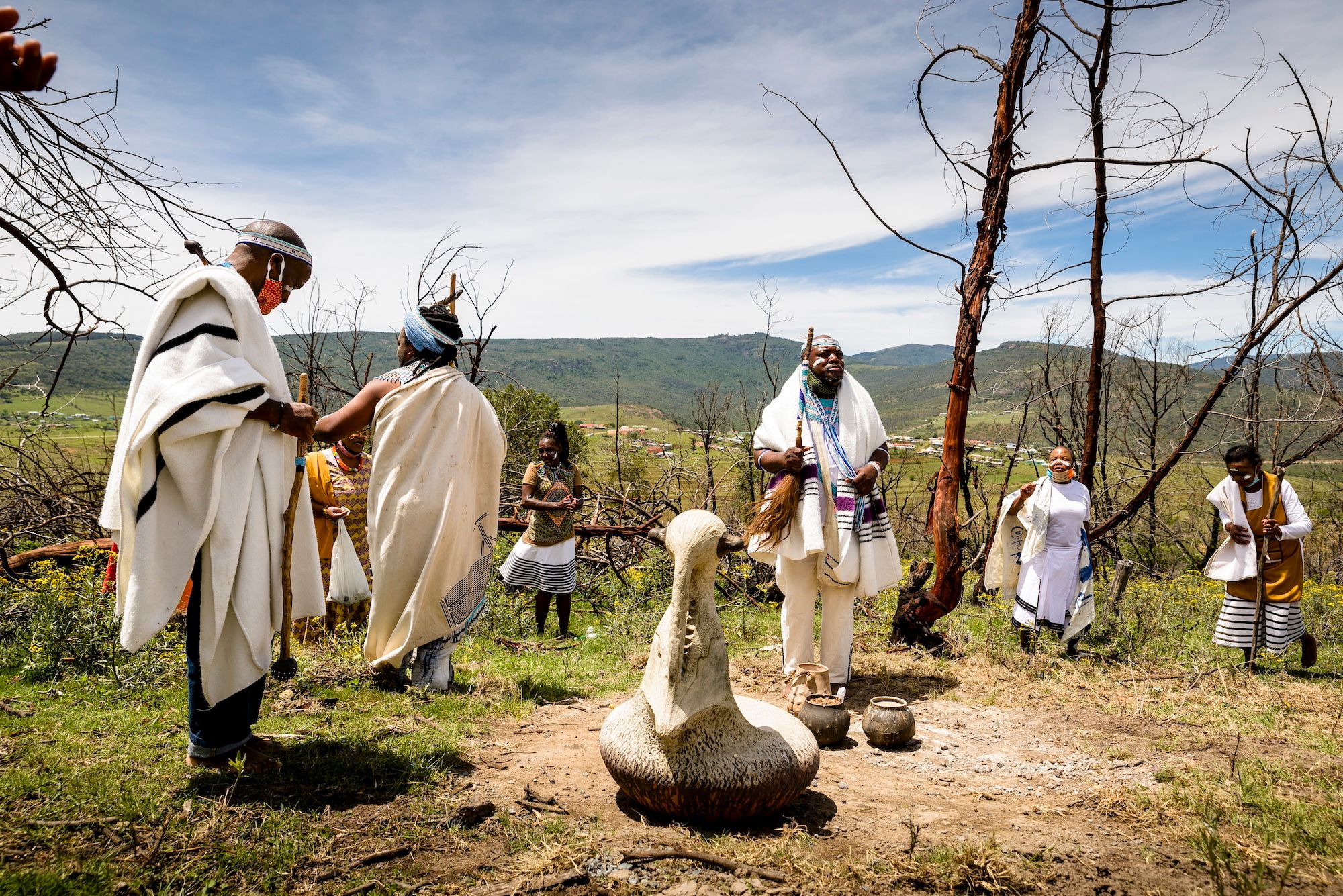
ANDILE DYALVANE/ ITHONGO CEREMONY IN THE EASTERN CAPE, 2020
Photos © Adriaan Louw, Southern Guild, and Friedman Benda
Anna Carnick/ What projects are you most proud of to date and why?
Andile Dyalvane/ My affections are for all that I've been able to put into this world through clay—works that, in essence, feel like conversations with our ancestors and expressions of our deepest gratitude. Each collection is important.
One such collection is iThongo, meaning “visions from our ancestors,” a series of 18 stools that began as a journey to my home village of Ngobozana and family homestead. The collection addresses displacement by honoring our forefathers’ resistance and our place of spiritual residence.
An ancestral connection allows for some works to be channeled through me to address the brokenness within our collective experiences and to offer opportunities to heal traumas. iThongo was presented in my village in December 2020 and was/is a direct energetic path for acknowledging community displacement.
Addressing the fracturing of our spirits and traditions is needed to help unify families and communities displaced by South Africa's apartheid regime 62 years ago. Let's dream what's possible.


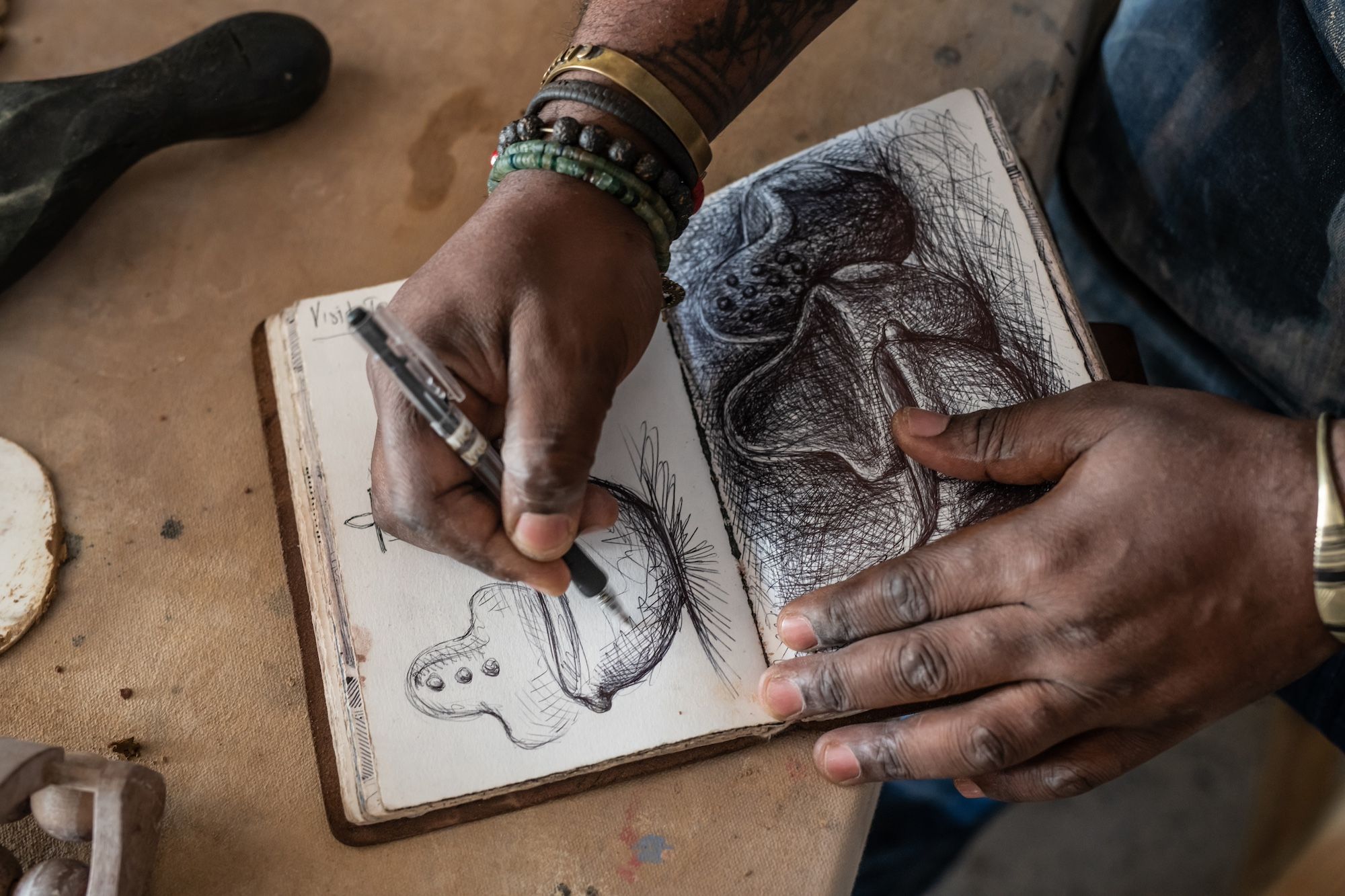
ANDILE DYALVANE/ WITH ITHONGO COLLABORATORS SISONKE PAPU, REZ INYANZI, AND NKOSENATHI ERNIE KOELA; IDLADLA COLLECTION, 2017; AND SKETCHBOOK
Photos © AdriaanLouw and Southern Guild; © Adel Ferreira, Southern Guild, and Xigera
AC/ How can design help us navigate this divided moment?
AD/In my mother-tongue of isiXhosa, the word “ukuchwela” means “to create” and comes close to what is meant by the English word “design.” Making useful things is a way to be present to life, to make a meaningful contribution to our community—to our daily routines and adaptations. For us, there is no separation between craft, art, and design—a separation that academia so desperately seeks. Communally shared, utilitarian, and artisanal endeavors by umchweli (the creators of things) are for the well-being of families—to bring change, solve problems, and spark a new curiosity.
Sound is in me, and working with sound has brought me into better places of resolution. Ceramic udu drums were the first sound instruments I made. Sitting in a sphere, surrounded in sound, is a place to be honest with myself and to be vulnerable in conversation with peers, creating moments of deeper trust and discipline.
“To me, the goodness of life can be remembered through working with community and with clay.”
— Andile Dyalvane
AC/ How can design be a tool for positive social change?
AD/ Uyalezo, meaning “messages from our ancestors,” is a collection of glyph-like, archival symbol-forms that associate memory, language, and journeys to a time before language as we know it now. They are symbols I received from my ancestral dimension.
Design tools can help us transcend language when we are determined to communicate from a pure place of collaborative intentions with artists from different backgrounds and in far away lands. Through design, dialogue, and discourse, our critical priority is to imagine how humanity can attend effectively to being honest and truthful in our communication.
How do we design a new way toward higher values? Perhaps the answer is found in creating spaces with heart-opening vibrations that resonate with our understanding that existed before language as we know it now—a time of infancy, before social conformity, a time when survival made you realize how crucial nurturing is for living life. To me, the goodness of life can be remembered through working with community and with clay.
Check out other Where We Stand interviews in Design Miami/ Forum Magazine.
This editorial series was conceived and curated by Anna Carnick and Wava Carpenter of Design Miami and Anava Projects as an exploration of the Design Miami/ 2023 curatorial theme Where We Stand.
About Where We Stand: Reflections on Place, Purpose & Community: Objects are anthropological markers of time and place. Through material, process, and form, every object tells a story—not only of the makers and societies responsible for their creation, but also of the human experience more broadly. Responding to the complexities that define our current timeline, Where We Stand explores the storytelling power of design and, in turn, its potential for nurturing connectivity. As we celebrate objects from around the globe inspired by place, identity, and heritage, we hope to prompt questions—and potential answers—to help us navigate this complex, polarized period in history: How do objects narrate human progress? And how can we harness the beauty and power of our most intimate, rooted bonds, individually and collectively, to realize a more perfect world to call our own?
Click here to purchase tickets to attend Design Miami/ 2023, located at Convention Center Drive & 19th Street in Miami Beach and open to the public December 6-10.
